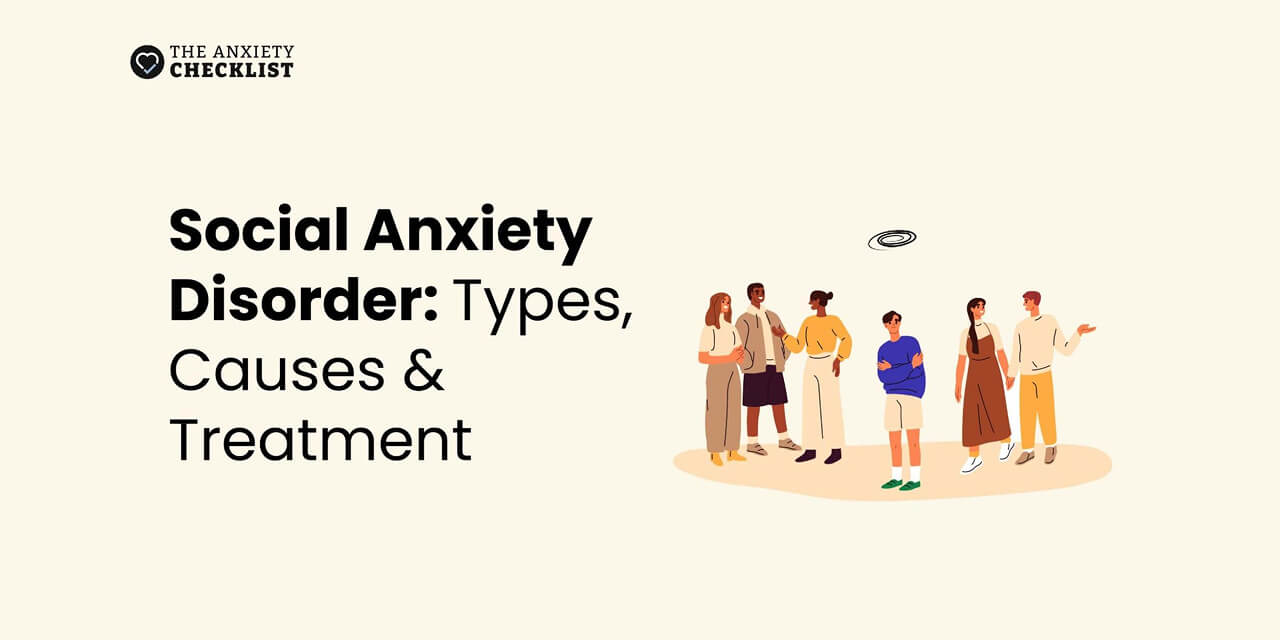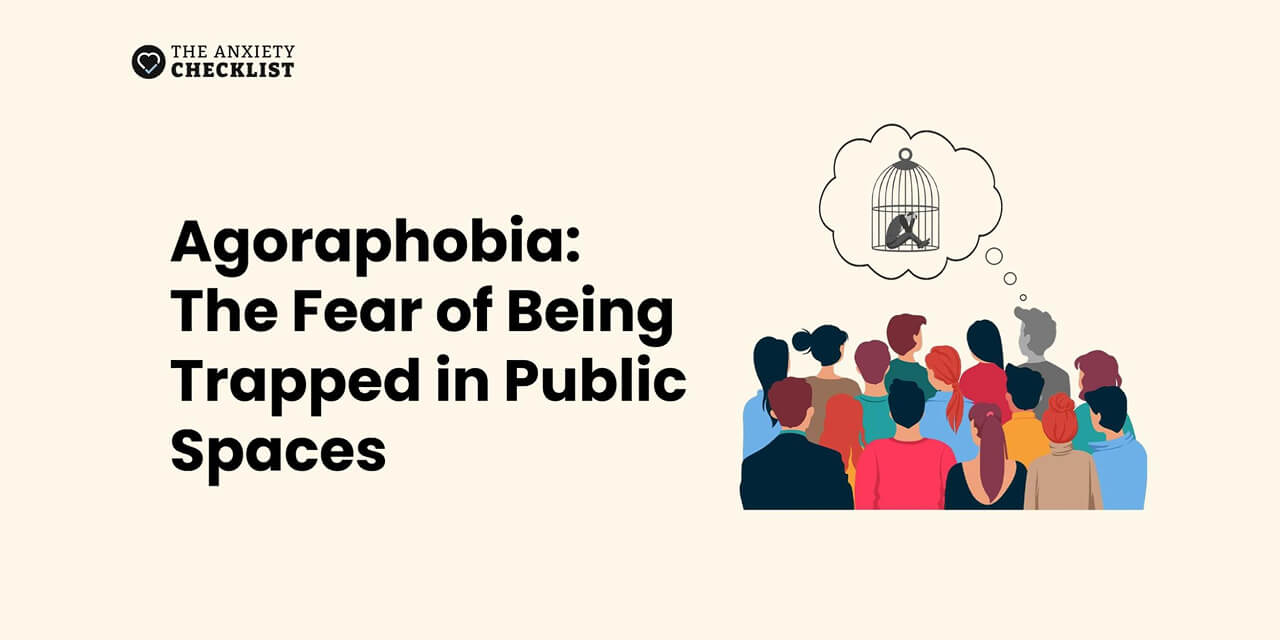What is Social Anxiety Disorder?
Social Anxiety vs Normal Shyness
Shyness and social anxiety may seem similar, but they differ in intensity and impact. Shy people may feel nervous in social settings but usually adjust over time. In contrast, those with Social Anxiety Disorder experience prolonged distress that disrupts their personal and professional life.
Here is an overview of how social anxiety differentiates from normal shyness:

Types of Social Anxiety Disorders
Social Anxiety Disorder can manifest in different ways, affecting people in various social settings.
While the core symptom remains a deep fear of judgment or embarrassment, the condition is generally categorized into two main types:
- Generalized Social Anxiety Disorder
- Specific Social Anxiety Disorder
However, social anxiety can take on more specific forms based on the situations that trigger distress. Here, we’ll discuss six such types.
1. Generalized Social Anxiety Disorder
This type of social anxiety affects nearly all aspects of a person’s social life, making everyday interactions extremely stressful.
People with generalized social anxiety often struggle with casual conversations, work meetings, public speaking, and even routine activities like ordering food at a restaurant.
The constant fear of being judged or embarrassed can lead to avoidance, making it difficult to build relationships, advance in a career, and enjoy everyday experiences.
2. Specific (Performance-Based) Social Anxiety Disorder
People with this type of social anxiety disorder feel extreme nervousness in specific situations, like giving a speech, performing on stage, or being the center of attention.
They might feel at ease in casual conversations or one-on-one interactions but struggle when faced with a crowd. They fear making mistakes, stumbling over words, or being scrutinized.
Each of these situations can cause them overwhelming stress, sometimes leading to panic attacks. Because of this, they tend to avoid career paths or activities that require public performance, limiting their opportunities.
3. Social Anxiety in Professional Settings
This type specifically affects people in work or academic environments, where social interactions are necessary for success.
Those who struggle with it may feel anxious about speaking up in meetings, giving presentations, or interacting with colleagues. They often worry about saying the wrong thing, looking unqualified, or embarrassing themselves in front of supervisors.
Because of this, they may avoid networking events, turn down promotions that involve leadership, or struggle with job interviews, making it harder to grow in their careers.
4. Social Anxiety in Interpersonal Relationships
Some people find it especially hard to build and maintain relationships due to social anxiety. They may feel nervous about dating, making new friends, or engaging in group activities because they fear rejection, criticism, or awkward moments.
This fear can cause them to overanalyze conversations, avoid initiating interactions, or withdraw from social opportunities.
Over time, this withdrawal can lead to loneliness, making the anxiety even worse. Since close relationships are important for emotional well-being, this type of social anxiety can be especially tough to cope with.
5. Social Anxiety Related to Eating or Drinking in Public
For some people, eating or drinking in front of others can be extremely stressful. They may worry about being watched, judged, or making an embarrassing mistake, like spilling food or chewing too loudly.
This anxiety forces them to avoid social meals, such as office lunches, family gatherings, or dining out with friends.
In extreme cases, they may prefer to eat alone at home rather than risk embarrassment in public settings, which can affect their social life and mental health.
6. Nonverbal Social Anxiety
While most forms of social anxiety involve difficulties with verbal interactions, some people experience anxiety related to nonverbal communication.
This includes making eye contact, using hand gestures, or maintaining an appropriate facial expression during conversations.
They may fear that their body language will be misinterpreted or that they will come across as awkward or unfriendly.
As a result, they may avoid situations where nonverbal cues matter, like driving or being in a vehicle, even if no talking is required.
Is anxiety keeping you stuck in your head?
Learn how to calm your body, break fear cycles, and rebuild confidence with a clear, guided system.
Signs and Symptoms of Social Anxiety Disorder
Social Anxiety Disorder (SAD) affects people on multiple levels—emotionally, physically, and behaviorally. While it’s normal to feel nervous in social situations sometimes, those with SAD deal with intense and ongoing anxiety that disrupts their daily lives.
Recognizing these signs early can help with getting the right support and treatment.
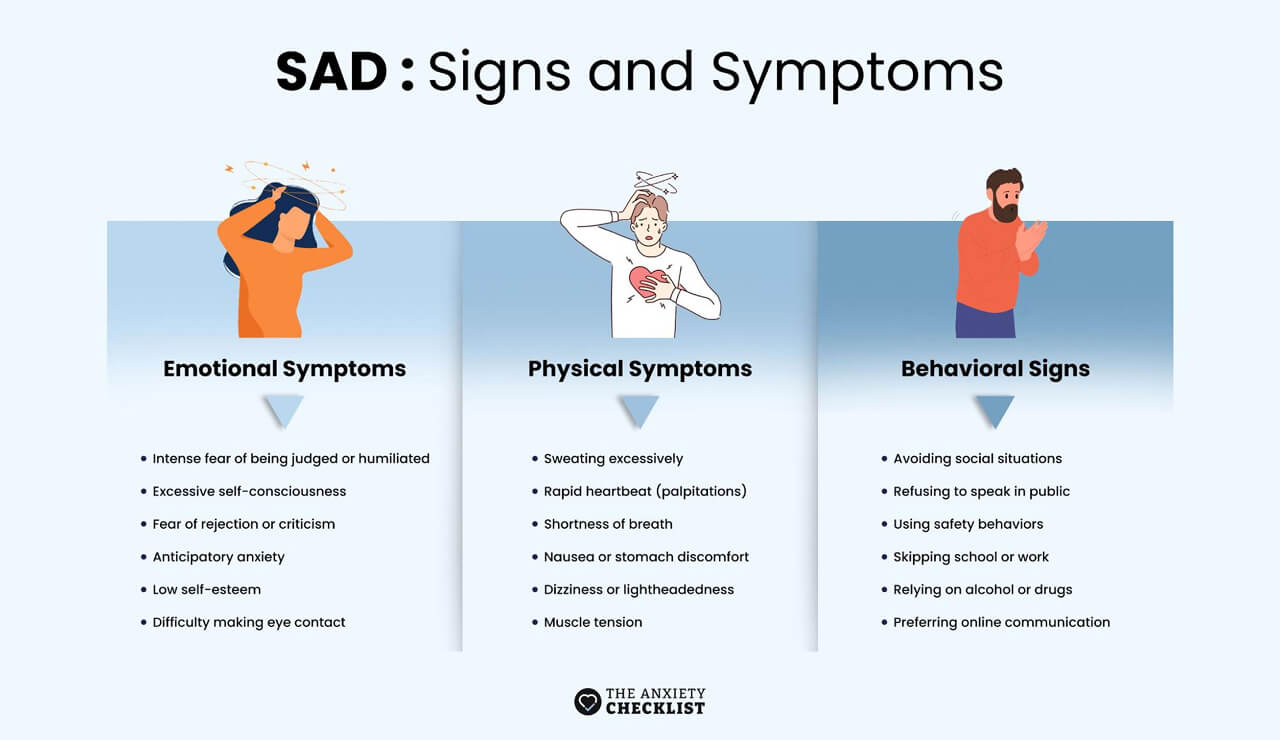
Emotional Symptoms
People with Social Anxiety Disorder experience overwhelming emotional distress in social settings, mainly because they fear being judged.
Some of the most common emotional symptoms include:
Physical Symptoms
The emotional distress caused by social anxiety often triggers strong physical reactions. These symptoms can be so intense that they mimic a panic attack.
Common physical symptoms include:
Behavioral Signs
The emotional and physical distress of social anxiety often leads to noticeable changes in behavior. Many people develop coping mechanisms to avoid uncomfortable situations, which can interfere with their daily lives.
Some common behavioral signs include:
Causes and Risk Factors of Social Anxiety Disorder
Social Anxiety Disorder (SAD) doesn’t have a single cause—it develops from a mix of genetics, environment, and brain chemistry.
Some people are naturally more prone to anxiety, but life experiences and the way the brain processes fear and stress also play a major role.
Understanding these factors can help in managing and overcoming social anxiety.
Genetic and Biological Factors
Environmental Influences and Life Experiences
Brain Chemistry and Developmental Aspects
Diagnosis and Treatment Options for Social Anxiety Disorder
Many people with Social Anxiety Disorder (SAD) mistake their symptoms for extreme shyness, which is one of the reasons why it's so difficult to diagnose.
However, an accurate diagnosis is crucial for finding the right treatment. A combination of professional assessments, therapy, medication, and lifestyle changes can help people manage their symptoms and improve their quality of life.
How Social Anxiety Disorder Is Diagnosed
Diagnosing Social Anxiety Disorder involves a thorough evaluation by a mental health professional, such as a psychologist or psychiatrist. The diagnostic process includes:
Treatment Options for Social Anxiety Disorder
The good news is, Social Anxiety Disorder responds to a variety of clinical and non-clinical treatments. The following are effective treatment options for SAD.
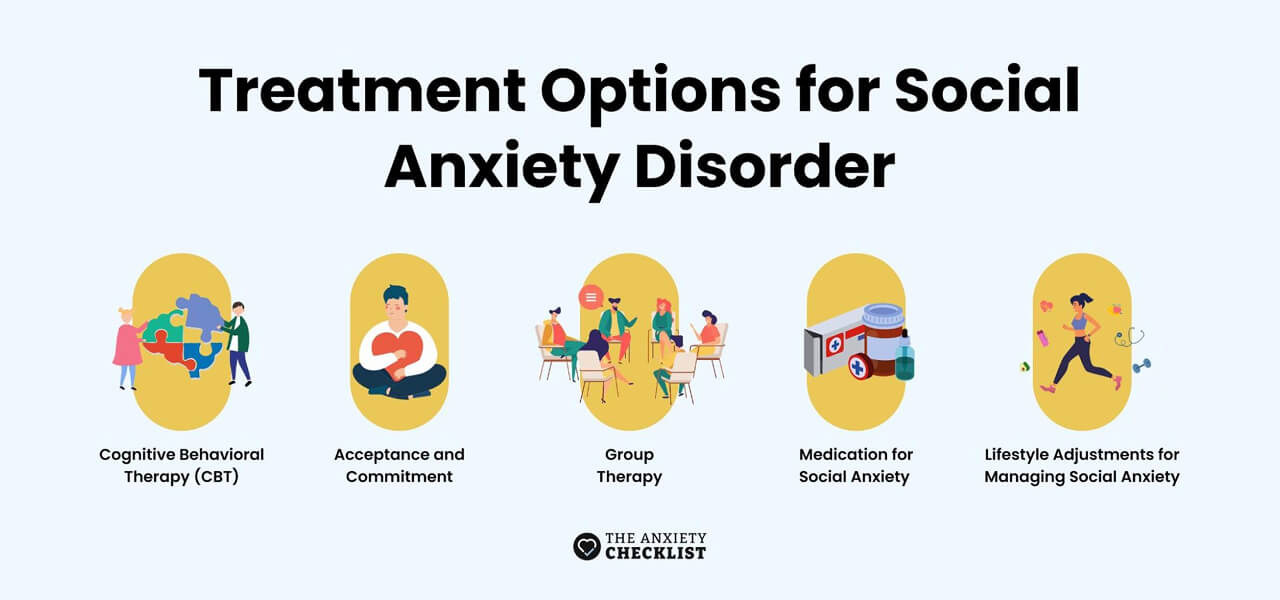
1. Cognitive Behavioral Therapy (CBT)
Cognitive Behavioral Therapy is the most effective form of therapy for Social Anxiety Disorder. It helps people recognize and change negative thought patterns that fuel anxiety.
This treatment encourages people to build confidence by eliminating irrational fears and gradually being a part of social gatherings.
Key techniques include:
2. Acceptance and Commitment Therapy (ACT)
ACT is a mindfulness-based therapy that encourages people to accept their anxious thoughts rather than try to eliminate them.
Instead of avoiding social situations, people learn to focus on their values and take meaningful actions despite their fears.
This therapy helps people develop psychological flexibility and reduce distress.
3. Group Therapy
Commonly known as psychotherapy for anxiety, it is facilitated in a structured environment where people with Social Anxiety Disorder can practice social interactions in a safe and supportive setting.
Group therapies are particularly effective for people with SAD as they get a chance to interact with people in a social environment without feeling overwhelmed.
It helps participants realize they are not alone and allows them to gain confidence through shared experiences. Led by a trained therapist, group therapy fosters gradual social exposure.
4. Medication for Social Anxiety Disorder
Medication is often used in combination with therapy to manage symptoms of social anxiety. It helps regulate brain chemistry and control excessive fear responses.
Doctors typically prescribe medication based on the severity of symptoms and the individual’s overall health.
5. Lifestyle Adjustments for Managing Social Anxiety
As mentioned, lifestyle changes can significantly improve social anxiety by promoting overall well-being and resilience.
Simple daily habits can help people gain confidence in social interactions and reduce their dependence on therapy or medication.
Coping Strategies for Daily Life
Managing social anxiety goes beyond therapy and medication—it involves adopting daily coping strategies that build resilience and confidence over time.
While overcoming social anxiety is a gradual process, small, consistent efforts can make a big impact.
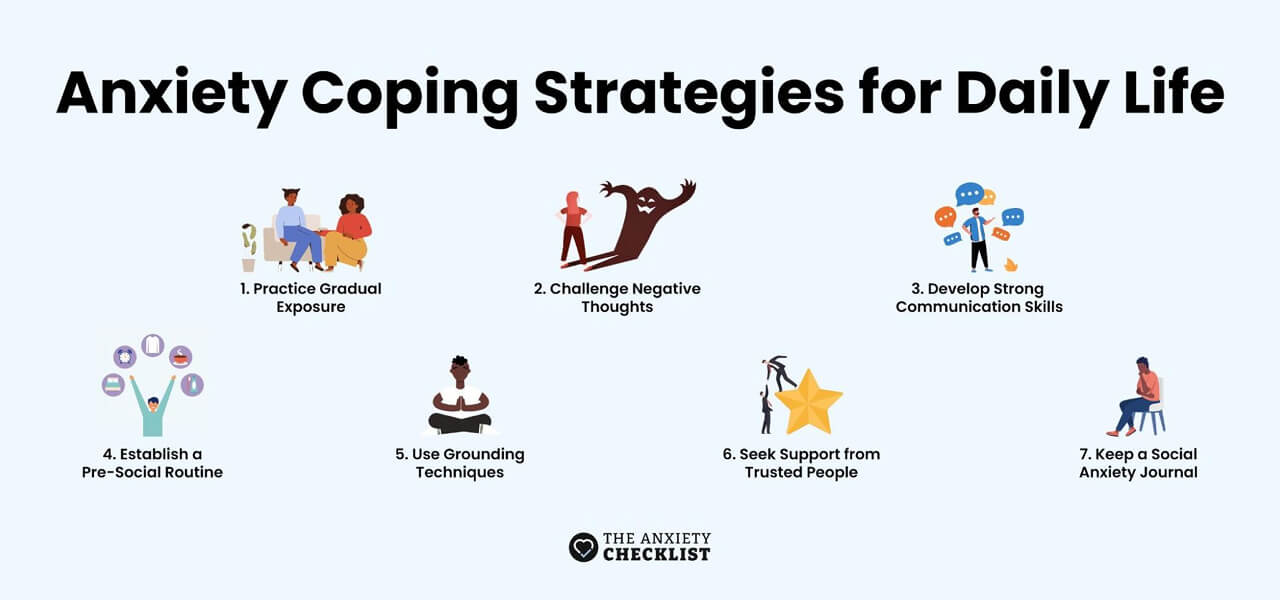
Here are some practical strategies that you can incorporate into your daily life.
1. Practice Gradual Exposure
Instead of avoiding social situations, try gradual exposure to build confidence.
Start with low-pressure interactions, such as greeting a neighbor or making small talk with a cashier, before moving on to more challenging scenarios like group conversations or public speaking.
2. Challenge Negative Thoughts
Social anxiety often stems from irrational fears about how others perceive you.
When you catch yourself thinking, “Everyone will judge me” or “I’ll embarrass myself”, challenge these thoughts with evidence.
Remind yourself that people are usually focused on themselves, not on judging others.
3. Develop Strong Communication Skills
Improving social skills can reduce anxiety. Practice active listening, maintain open body language, and use small talk starters to ease into conversations.
If verbal interactions feel overwhelming, non-verbal communication — such as nodding and smiling — can still help you feel engaged.
4. Establish a Pre-Social Routine
Having a calming pre-event routine can help reduce stress before social situations. Activities like deep breathing, visualization, or listening to soothing music can prepare your mind for interaction.
5. Use Grounding Techniques
In moments of intense anxiety, grounding exercises can bring your focus back to the present. Try the 5-4-3-2-1 technique:
6. Listen to Music
When dealing with anxiety, listening to music can help you feel calmer. Since music has the power to distract your mind, it’ll help you deal with the thoughts that lead to anxiousness.
Certain sounds like Binaural beats may influence brainwave activity which is often linked to relaxation, focus, and meditation.
You can try the Subliminal Audio track by AnxietyChecklist that incorporates Binaural beats for Anxiety Relief. This soundtrack also includes positive manifestations to help you ground yourself.
7. Keep a Social Anxiety Journal
Journaling your experiences and tracking progress can help you identify triggers, reflect on successes, and develop personalized coping strategies.
Writing down positive social interactions can boost your self-confidence over time.
Conclusion
Previous Article
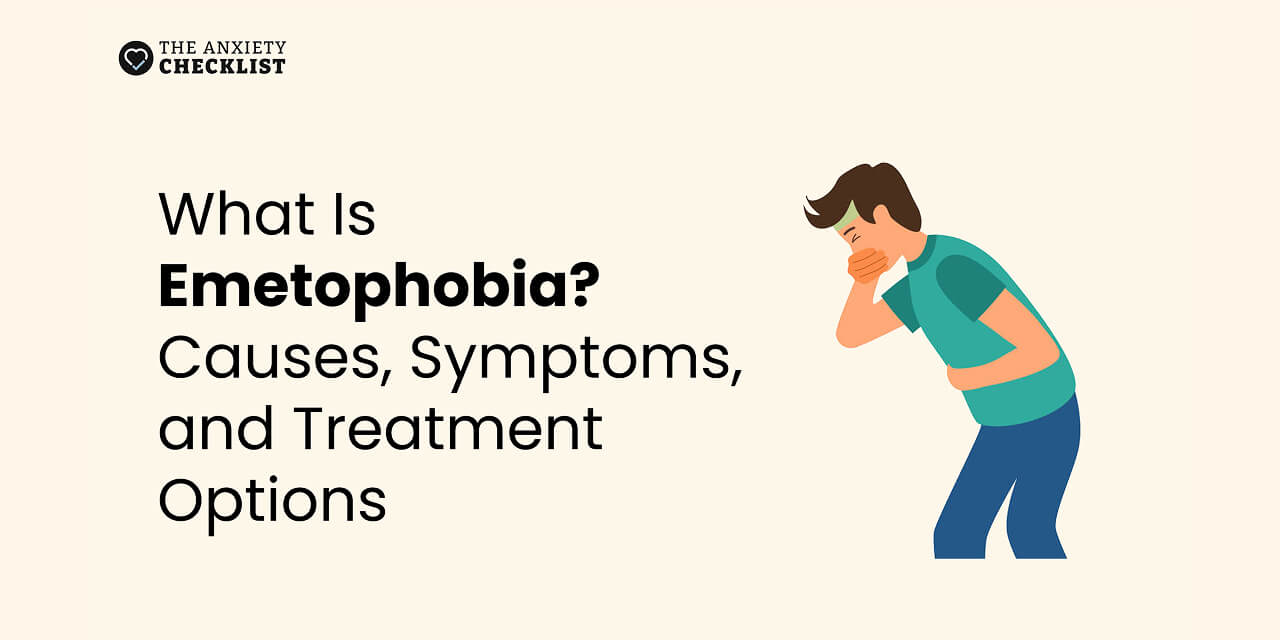
What Is Emetophobia? Causes, Symptoms, and Treatment Options

Advertisement
BetterHelp
BetterHelp makes starting therapy easy. Get a tailored therapist match based on your needs and preferences - in as little as 24 hours!
Enjoy 20% off your first month with code "anxietycheck"

4 million+ Helped
Access Therapy 24/7
Preferred by 94% of users
If you are in a crisis or any other person may be in danger - don't use this site. These resources can provide you with immediate help.


